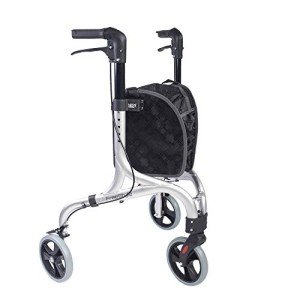
Medical Walker
Add a review FollowOverview
-
Founded Date 10/05/1999
-
Sectors Engineering
-
Posted Jobs 0
-
Viewed 48
Company Description
10 Quick Tips On Rollator With Seat
Understanding Rollators with Seats: A Comprehensive Guide
As the population ages, the need for mobility aids becomes significantly important. Among these aids, the rollator with seat shines as an important choice for individuals who may need additional assistance while keeping their independence. This article dives into the intricacies of rollators with seats, shedding light on their benefits, types, performance, and dependability.
What Is a Rollator with Seat?
A rollator with seat is a mobility device designed to assist individuals with walking while supplying a location to rest. Unlike standard walkers, rollators normally come equipped with four wheels, hand brakes, and a built-in seat. This mix enables users to preserve mobility while likewise ensuring they can take breaks whenever needed.
Secret Features of Rollators with Seats
- Four-Wheel Design: Rollators boast a stable four-wheel structure, making it possible for safe motion and ease of navigation.
- Hand Brakes: Equipped with hand brakes, rollators enable users to stop and lock the device securely when seated.
- Built-In Seat: Central to their design, the seat provides users a place to rest without needing them to find alternative seating.
- Lightweight Frame: Most rollators are made from lightweight materials, making them portable and easy to maneuver.
- Adjustable Handles: Users can personalize the height of the handles, promoting ergonomic use and reducing the threat of stress.
The Benefits of Using a Rollator with Seat
Rollators with seats provide various benefits, making them an ideal option for many individuals. Some of the main advantages consist of:
- Enhanced Mobility: Rollators provide increased mobility for users, allowing them to walk additional and more securely.
- Opportunity to Rest: The integrated HEAO Wide Seat Rollator with Storage Basket – Grey fosters self-reliance by permitting users to rest when fatigued without needing help.
- Safety Features: With brakes and stable support, rollators help avoid falls and other mishaps that may occur while walking.
- Improved Posture: Rollators encourage better walking posture due to their ergonomic design, promoting total physical health.
- Storage Options: Many rollators come equipped with baskets or bags for bring individual items, enhancing benefit during outings.
Types of Rollators with Seats
There are different configurations of rollators to accommodate the diverse requirements of users. These consist of:
| Type | Description |
|---|---|
| Standard Rollator | A fundamental model with 4 wheels, seat, and brakes. |
| Heavy-Duty Rollator | Designed for bigger people with increased weight capability. |
| Folding Rollator | Features a collapsible design for easy transportation and storage. |
| Three-Wheel Rollator | Provides a more compact design for browsing tight spaces. |
| Rollator with a Shopping Bag | Consists of extra storage for grocery or individual products. |
Selecting the Right Rollator
When exploring the alternatives available, people need to consider aspects such as:
- Size and Weight Capacity: Ensure the rollator can conveniently support the user’s weight.
- Adjustability: Look for alternatives with adjustable deal with heights.
- Wheels: Larger wheels supply much better navigation over rough surface, while smaller wheels might be appropriate for smooth surfaces.
- Storage Features: Evaluate the requirement for storage capabilities like baskets or trays.
Maintenance and Care
Correct upkeep of a rollator can improve its life-span and use. Here are some necessary suggestions for care:
- Regular Checks: Periodically inspect brakes, tires, and frames for wear and tear.
- Cleaning: Wipe down the frame and seat with a damp cloth; prevent harsh chemicals.
- Tire Maintenance: If the rollator has inflatable tires, guarantee they are effectively inflated.
FAQs About Rollators with Seats
Q1: How do I determine for the best rollator?
A1: Stand up straight and measure between your wrist and the floor. The rollator deals with should get used to this height for ergonomic use.
Q2: Can I use my rollator outdoors?
A2: Yes, rollators are developed for both indoor and outdoor use; however, some designs are much better suited for rough terrains than others.
Q3: Do I require a prescription to buy a rollator?
A3: Typically, a prescription is not needed to buy a rollator, but speaking with a healthcare company is advisable to guarantee it’s the ideal option for your requirements.
Q4: How much do rollators with seats cost?
A4: Prices vary substantially depending on the brand and functions, with standard designs starting around ₤ 100 and advanced types costing as much as ₤ 500 or more.

Q5: Are rollators safe?
A5: Yes, rollators are typically safe when utilized properly. Users must acquaint themselves with how to operate the brakes and change the rollator to prevent mishaps.
Rollators with seats function as important tools for people seeking increased mobility while keeping independence. By understanding their functions, benefits, and the types offered, users can make informed decisions tailored to their needs. Whether for journeys to the supermarket or leisurely walks in the park, the best rollator can be a video game changer in the pursuit of an active way of life. As mobility aids continue to progress, it is important to remain educated about the options readily available to guarantee safety and convenience throughout use.

